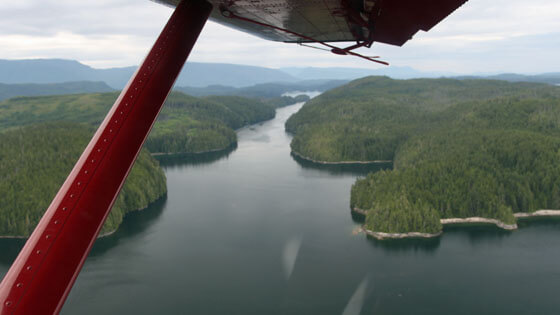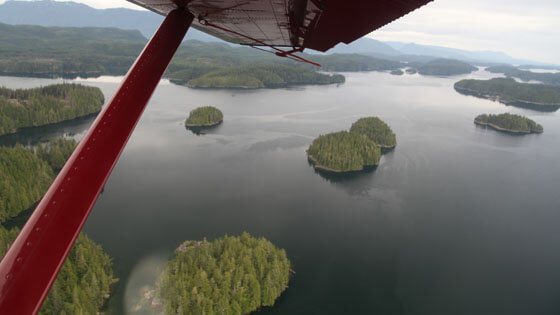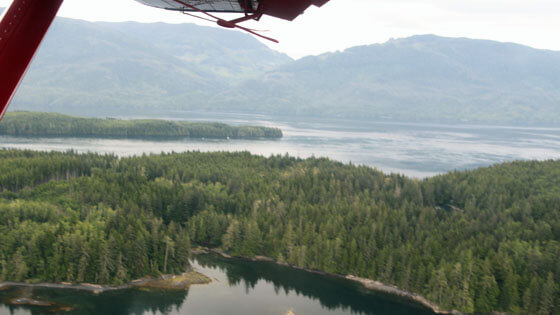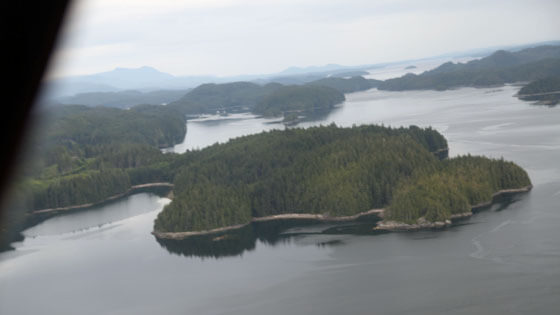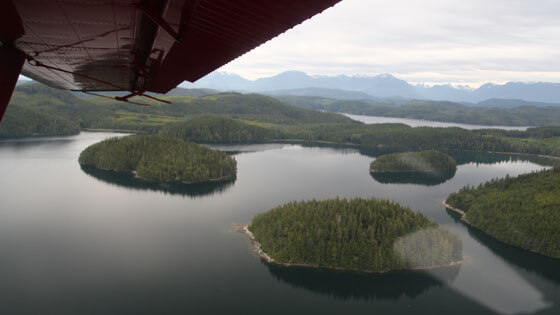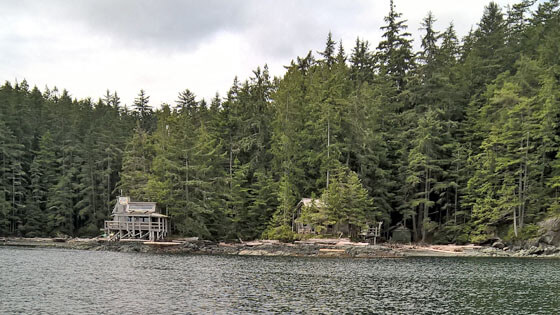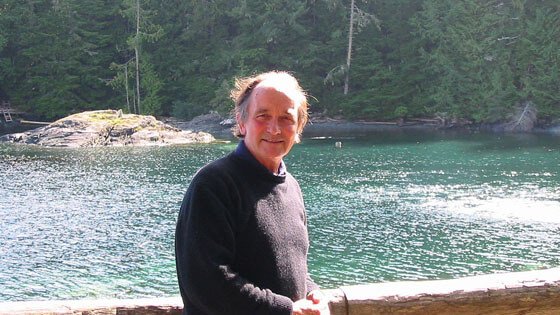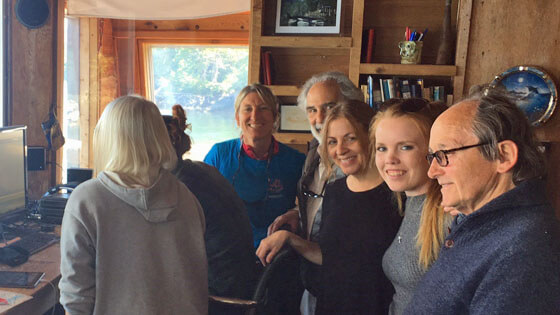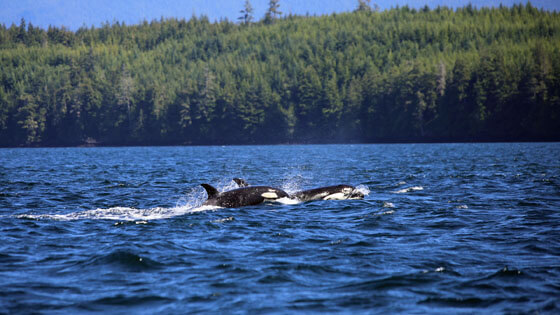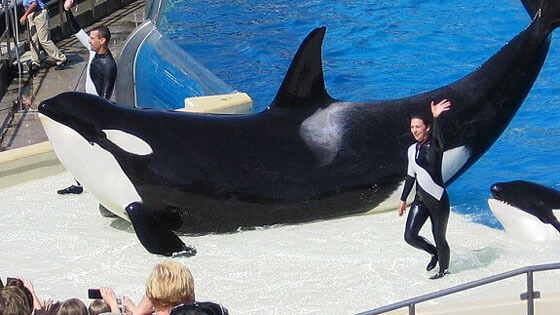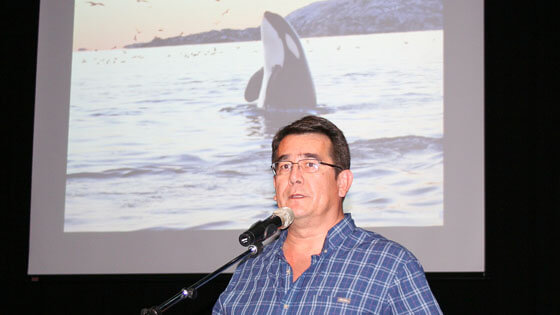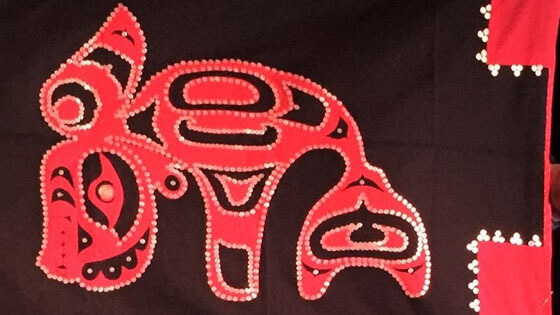(First in a series of posts about our search for the best location for a seaside sanctuary for captive orcas or beluga whales. This post is about British Columbia.)
How many coves, bays and inlets are there in British Columbia that would be heavenly as a sanctuary for orcas being retired from captivity in marine entertainment parks?
Truly, the number of possible locations must be in the thousands. Most of them, however, are too far from human civilization – fresh water, power, transport, schools, medical facilities – to be practical.
The closest are around Vancouver Island and, starting in 2017, we researched hundreds of these, first using desktop maps with overlays showing water depth and other valuable information. Over several visits, we visited dozens of them, first by plane and then by boat. Here are a few that we visited by float plane in the Johnstone Strait on one particular day:
Mound Island
Among the many sites that we followed up by boat, one that presented itself as fitting many of the necessary physical criteria – depth, sea-floor conditions, tides and currents, flora and fauna, and with access to civilization was Mound Island.
In Johnstone Strait near Farewell Harbour, Mound Island is a beautiful, protected area that’s remote from major human habitation. Its remoteness makes it a good example of a site that would be great for orcas and has few conflicts with local residents. But that same remoteness would, on the other hand, make it difficult for staff living and working there full-time over many years to come.
Our Executive Director Charles Vinick and President Lori Marino visited Mound Island during a boat tour of several locations.
A few months later, our West Coast site coordinators Jeff and Katy Foster conducted a general assessment of the site and concluded that while its remoteness would indeed pose a challenge, it met the key physical criteria for an orca sanctuary.
Free Corky
We also had an opportunity to visit with the renowned husband-wife team of Paul Spong and Helena Symonds, co-directors of OrcaLab, a land based whale research station on Hanson Island, and directors of the non-profit Pacific Orca Society.
Their work focuses on the long-term life history of the Northern Resident orcas, the protection of orca habitat, and cetacean welfare issues such as commercial whaling and captivity. In 1984, Paul & Helena launched the “Free Corky” campaign, in an attempt to return the last surviving Northern Resident captive orca to her family and community. Now in her mid-50s, Corky was captured as a four-year-old and has been at SeaWorld San Diego since 1987.
(More about Corky here. including an ABC News Nightline report from 1993.)
It is Paul and Helena’s desire to see Corky returned to these waters where her family, the “A” pod, still make their home.
Reconciliation
During our first field visit to prospective Canadian sanctuary sites, Whale Sanctuary Project president Lori Marino was invited to speak at Vancouver’s Roundhouse Community Centre.
The theme of the evening was “Reconciliation,” and it was introduced by Chief Bob Chamberlin of the Kwikwasut’inuxw Haxwa’mis First Nation. Chief Chamberlin (in the slideshow above) talked about his work in helping to bring about reconciliation between his people and European immigrants. In the same way, he said, it’s time to bring about reconciliation with our fellow animals and the natural world.
Dr. Marino took up the theme of reconciliation, discussing how a sanctuary can give back to captive whales as much as possible of the life they’ve lost by being taken from their homes and families in the wild.
Next:The San Juan Islands.
